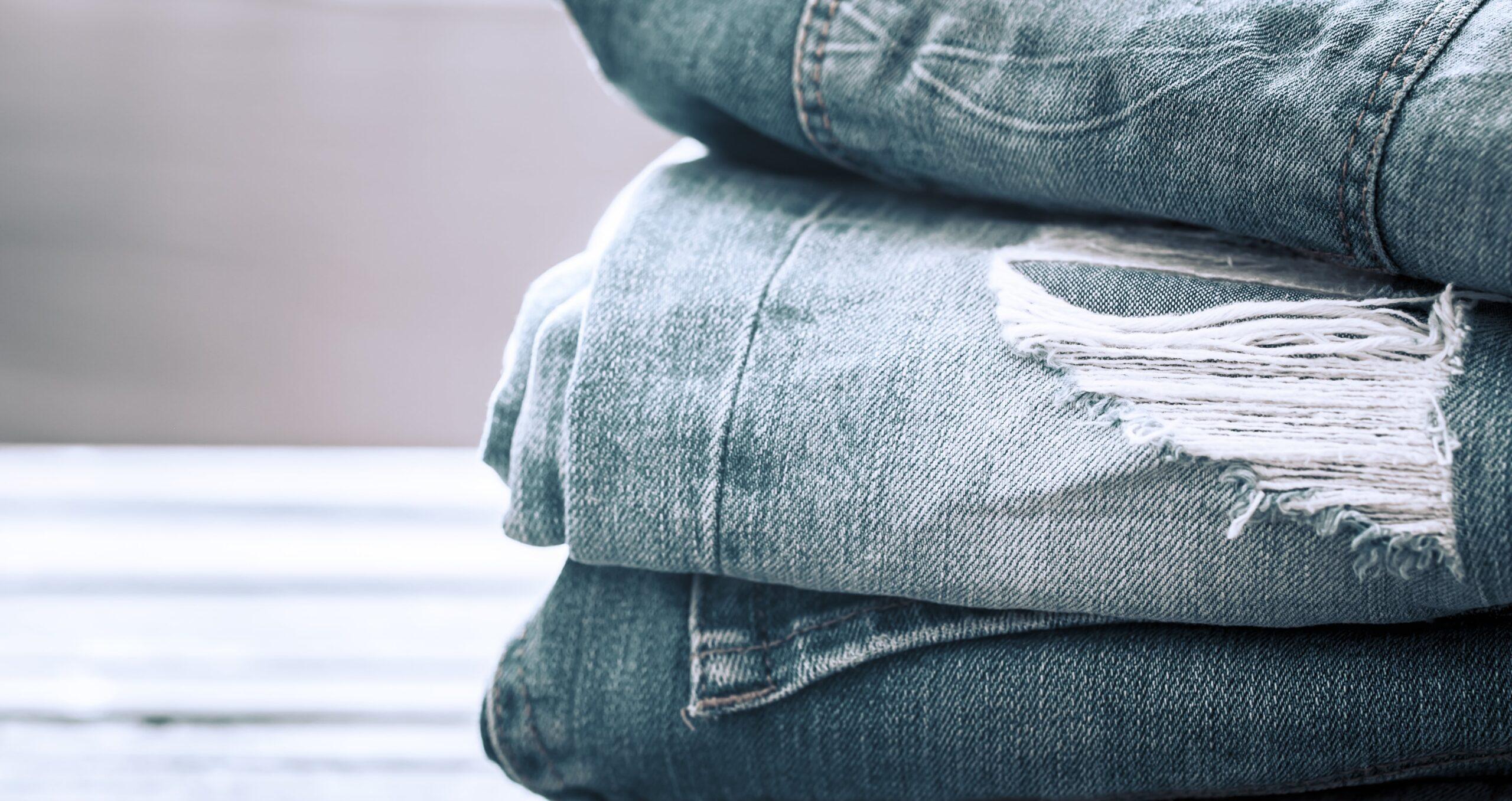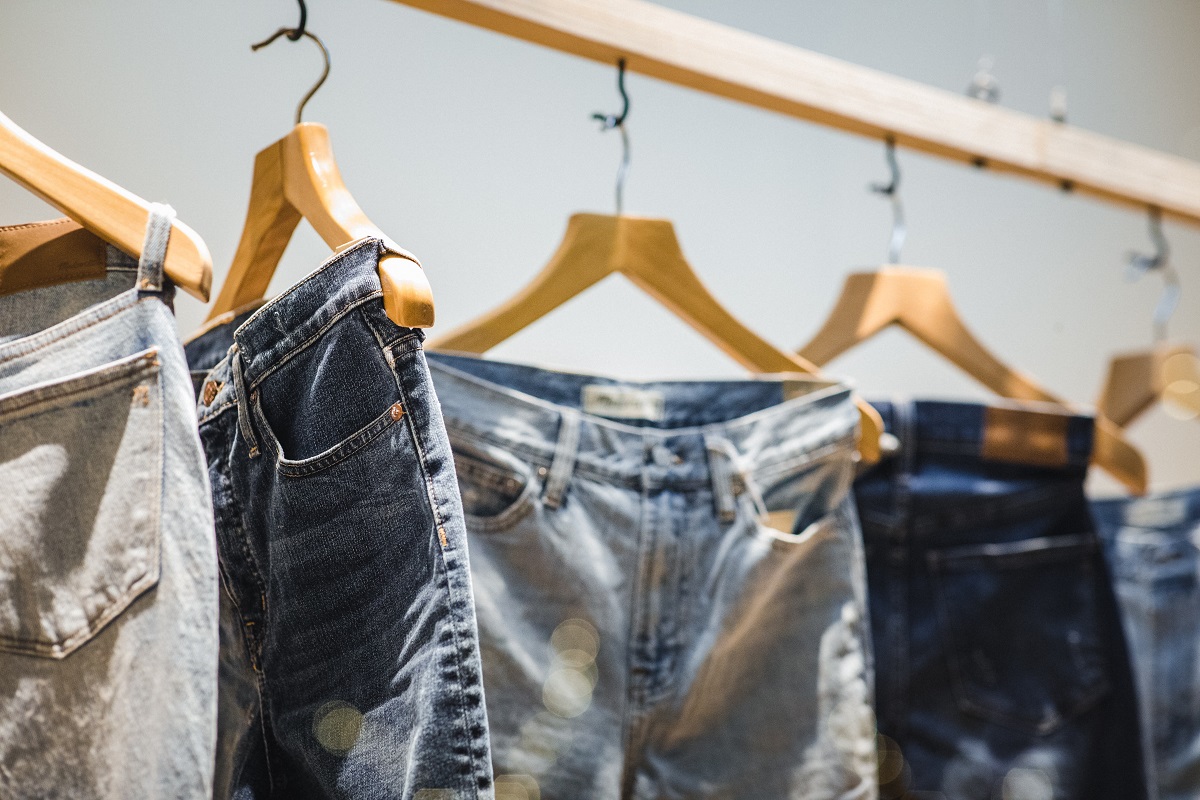Let me begin by saying that there is not one story of how jeans became popular. However, because if their versatility and comfort, they have become wardrobe staples for people across age groups, genders, and cultures.
Jeans and denim overalls have evolved from being simple work pants and waist overalls to becoming a global style statement. From casual clothes to high fashion runways, jeans and denim overalls have effortlessly made their way into our lives.
The journey of jeans and denim overalls began with an innovative idea that revolutionized the world of fashion. It all started when James Dean donned a pair of blue jeans, denim overalls, pants, and trousers in the 1950s, capturing the imagination of youth seeking cool and rebellious clothes. Soon after, iconic brands like Calvin Klein embraced this trend and transformed jeans and denim overalls into household names.
The popularity of jeans, pants made from durable jean fabric, can be attributed to their various styles like skinny jeans and tight jeans that cater to different preferences.
Moreover, their association with pop culture further propelled their status as must-have attire for wearing. So next time you slip into your favorite pair of denim trousers, remember that you are partaking in an enduring fashion legacy that has shaped our modern-day style landscape, including the trend of bellbottoms and the timeless indigo color.
The Evolution of Denim Jeans and their Permanent Place in Western Fashion
A Rich History Dating Back to the 1800s
Denim jeans, also known as denim trousers or pants, have a fascinating history that can be traced back to the 1800s.
Originally, they were primarily worn by workers due to their durability and strength. In fact, denim fabric, dyed with indigo, was first created in France during the 18th century and was known as “serge de Nimes,” which eventually led to the word “denim.”
From Workwear to Iconic Fashion Items
Over time, denim jeans evolved from being functional workwear into iconic fashion items. One key factor that contributed to this transformation was the innovation of Levi Strauss and Jacob Davis who introduced rivets to reinforce stress points on jeans.
This breakthrough made them even more durable, appealing not only to workers but also to individuals looking for reliable pants. The indigo color used in their production also added to their appeal, giving them a timeless and classic look.
Additionally, the washing process of denim trousers further enhanced their style, making them even more desirable for fashion-conscious individuals.
Western Culture’s Influence on Popularizing Denim Jeans
Western culture played a significant role in popularizing denim jeans, also known as pants, as symbols of ruggedness and rebellion. During the late 19th century, cowboys started wearing indigo denim jeans as part of their everyday attire due to their practicality and resilience.
This association with cowboys added a sense of adventure and freedom that captured people’s imaginations. The popularity of denim jeans spread throughout the US, and the process of washing them became an essential part of maintaining their quality.
Decades of Denim Fashion
1950s: The Birth of Modern Jeans
In the 1950s, denim jeans, also known as pants, gained widespread popularity thanks to cultural icons like James Dean who wore them in movies such as “Rebel Without a Cause.”
Their rebellious image resonated with young people seeking an identity outside societal norms. The durability of denim made it ideal for everyday wear, and Levi Strauss & Co., founded by Jacob Davis and Levi Strauss, played a crucial role in popularizing jeans through their innovative approach to washing and distressing denim fabric.
1960s: The Rise of Denim Overalls
During the 1960s, denim overalls, made from jean fabric, became a fashion staple among counterculture movements such as hippies. These loose-fitting garments, made of modern jeans, represented a rejection of mainstream fashion and embraced comfort and simplicity. Washing jeans was an essential part of maintaining their quality.
1970s: Flared Jeans and Individual Expression
The 1970s witnessed the rise of flared jeans, popularized by icons like Farrah Fawcett. This era was all about self-expression, denim fashion, and flared jeans allowed individuals to showcase their unique style by wearing pants that suited us.
1980s: The Era of Designer Denim
In the 1980s, designer denim, particularly blue jeans, took center stage. Brands like Calvin Klein and Guess capitalized on the popularity of blue jeans by adding their unique touch through embellishments, high-waisted cuts, and acid washes. The trend quickly spread throughout the US.
Denim’s Enduring Appeal
Despite evolving fashion trends, denim jeans have remained a wardrobe staple for decades. Their versatility allows them to be dressed up or down for various occasions.
Whether it’s a casual day out or a night on the town, denim jeans continue to be a go-to choice for many.
From boot cut to skinny fit, denim comes in various styles that cater to individual preferences. The indigo dye used in denim fabric gives it a timeless appeal that never seems to fade away.
Modern jeans, such as tight jeans, have gained popularity among fashion enthusiasts. Additionally, washing jeans is an essential step to maintain their quality and color.
The Birth of Jeans: Serge de Nîmes and Levi Strauss & Co.
French Fabric Revolutionizes Denim:
- In the late 18th century, a French fabric called “serge de Nîmes” laid the foundation for denim fabric used in jeans.
- This sturdy cotton twill fabric, also known as denim, was first produced in the town of Nîmes, France. Denim jeans, a popular fashion choice, are made from this fabric.
- Many people enjoy washing jeans to maintain their quality and appearance. Additionally, tight jeans are a trendy style that many individuals prefer.
- With its durable nature and ability to withstand heavy use, serge de Nîmes, also known as jean fabric or denim jean, quickly gained popularity among workers and laborers.
Levi Strauss & Co. Introduces Blue Jeans:
- Levi Strauss & Co., founded by Levi Strauss in 1853, played a crucial role in popularizing jeans.
- Originally from Bavaria, Germany, Levi Strauss moved to San Francisco during the California Gold Rush, where he introduced denim jeans made from jean fabric.
- Recognizing the need for durable work pants in the US, he partnered with Jacob Davis, a tailor from Nevada, to create riveted denim pants that would later be known as blue jeans.
A Revolution in Clothing:
- The partnership between fabric innovation, denim jean, and manufacturing expertise revolutionized the world of clothing.
- The introduction of blue jeans by Levi Strauss & Co. marked a significant turning point in fashion history.
- Initially designed for miners and cowboys due to their durability, jeans soon became popular among people from all walks of life.
From Workwear to Fashion Statement:
- Over time, jeans evolved from being solely functional workwear to a fashion statement embraced by individuals worldwide.
- Hollywood movies featuring rugged heroes sporting denim jeans helped propel its popularity even further.
- Icons like James Dean and Marlon Brando made jeans synonymous with rebellion and non-conformity.
Global Influence:
- As word spread about this versatile garment, demand for blue jeans soared not only within the United States but also internationally.
- In the mid-twentieth century, American culture, including denim jeans, began permeating countries around the world.
- Young people across Europe started embracing American fashion, including jeans.
- Even in the Soviet Union, where Western influence was limited, jeans became a symbol of freedom and rebellion.
Levi Strauss & Co.’s Legacy:
- Today, Levi Strauss & Co. remains one of the most recognizable denim brands globally, known for their high-quality jeans.
- The company’s commitment to quality, denim, and innovation has ensured its continued success for over a century and a half in the jean industry.
- From its humble beginnings in San Francisco to becoming an iconic fashion brand, Levi Strauss & Co. played an instrumental role in making jeans popular worldwide.
The Wild West Influence on Jeans from the 1800s to the 1900s:
Cowboys Embracing Durability and Practicality
In the vast expanse of the American West during the 19th century, denim jeans found their perfect match with cowboys.
These rugged individuals needed clothing that could withstand the harsh conditions they faced daily. With its sturdy fabric and durable construction, denim proved to be an ideal choice for these hardworking men.
Denim jeans were made from a twill fabric known as “serge de Nîmes,” which originated in France. This fabric was initially used for sails due to its strength and ability to endure rough weather conditions.
When it arrived in America, it quickly caught the attention of cowboys who recognized its potential as workwear.
The practicality of denim jeans cannot be overstated. They featured reinforced stitching, rivets at stress points, and ample pocket space for tools and personal belongings.
Cowboys valued these features as they allowed them to carry essential items while working long hours in demanding environments.
Hollywood’s Portrayal of Cowboys
While denim jeans gained popularity among cowboys in the American West, it was Hollywood that propelled them into mainstream fashion during the early 20th century. Western movies became a cultural phenomenon, captivating audiences worldwide with tales of adventure set against breathtaking landscapes.
As these films depicted rugged cowboys effortlessly riding horses and taking on outlaws, one thing remained constant: their attire. The iconic image of cowboys donning denim jeans became etched in people’s minds thanks to Hollywood’s portrayal.
A Global Icon is Born
With western movies gaining popularity internationally, so too did the image of cowboys wearing jeans.
As audiences watched their favorite actors embodying these characters on screen, they couldn’t help but be captivated by their rugged charm and timeless style.
Jeans quickly transitioned from being solely functional workwear to becoming a symbol of rebellion, freedom, and individuality. People from all walks of life began embracing this new fashion trend, making jeans a staple in wardrobes around the world.
The Enduring Legacy
The influence of the American West on jeans cannot be overstated. From their humble beginnings as workwear for cowboys to their transformation into a global fashion icon, jeans have stood the test of time.
Even today, denim remains an integral part of our culture and fashion choices. It has evolved to encompass various styles, cuts, and washes while still retaining its essence as a durable and versatile fabric.
So the next time you slip into a pair of jeans, remember that you are not just wearing a piece of clothing but also embodying the spirit of the Wild West and its enduring legacy.
The Rise of Lowrise Jeans and their Cultural Significance:
Embracing the Daring Style
In the late 1990s and early 2000s, a fashion trend took the world by storm – low-rise jeans. This daring style quickly gained popularity, with celebrities at the forefront of its embrace.
Stars like Britney Spears, Christina Aguilera, and Paris Hilton flaunted their flat bellbottoms and low-rise jeans, making them a must-have item for fashion-conscious individuals everywhere.
Challenging Traditions and Reflecting Attitudes
Lowrise jeans challenged traditional notions of modesty in a bold way. With their waistlines sitting well below the navel, they pushed boundaries and ignited discussions about body image standards. This rebellious trend reflected a more relaxed attitude towards fashion, encouraging self-expression through clothing choices.
Body Image Standards Under Scrutiny
The rise of low-rise jeans brought body image standards into sharp focus. As these jeans became popular, conversations surrounding beauty ideals intensified.
Some argued that this trend promoted unrealistic expectations by emphasizing thinness and an ultra-low waistline as desirable attributes. Others saw it as an empowering movement that celebrated individuality and personal style.
Self-Expression Through Clothing
Low-rise jeans provided a canvas for self-expression like never before. People could convey their personality, taste in music, or even political beliefs through embroidered patches or band logos on their denim bottoms.
The versatility of this trend allowed individuals to curate unique outfits that showcased their identity.
To illustrate further:
- Embroidered Patches: Many people adorned their low-rise jeans with embroidered patches representing favorite bands or causes.
- Logo Mania: Brand logos became prevalent on these jeans, showcasing one’s affinity for certain designers or labels.
- Customization: Some enthusiasts took DIY approaches by distressing or bleaching their low-rise jeans to achieve a personalized look.
This level of customization allowed wearers to express their individuality and stand out from the crowd.
A Fashion Revolution
Low-rise jeans marked a turning point in fashion history. They represented a rebellion against traditional styles and ushered in an era of daring experimentation. This trend challenged the status quo, encouraging people to embrace their bodies and express themselves through clothing.
Denim’s Influence on the Hippie Revolution and Hip Hop Culture:
Denim Jeans: A Symbol of Counterculture
During the 1960s and 1970s, denim jeans emerged as a powerful symbol of counterculture, embraced by hippies as a rejection of mainstream fashion. These rebellious youth sought to distance themselves from societal norms, and what better way to do so than through their choice of clothing?
Denim jeans offered a sense of individuality and freedom that resonated with the ideals of the hippie movement. Made from durable duck cotton fabric, they were both practical and stylish, embodying the spirit of nonconformity.
The ruggedness of denim represented a departure from the polished and tailored garments typically associated with traditional fashion.
Hippies saw denim as an expression of their anti-establishment sentiments. They adorned their jeans with patches, embroidery, and tie-dye designs, transforming them into unique works of art that reflected their personal values and beliefs.
Hip Hop: Redefining Urban Style
Moving forward to the 1980s and 1990s, hip hop artists played a pivotal role in popularizing denim jeans as an essential element of urban style and identity.
Baggy jeans became synonymous with hip hop culture, representing an attitude that was unapologetically cool.
Hip hop artists embraced baggy jeans not only for their comfort but also as a statement against societal norms that often marginalized communities from which these artists originated.
Baggy jeans provided freedom of movement during energetic performances while simultaneously challenging conventional notions of fashion.
The influence of denim on hip hop culture extended far beyond just clothing choices. It became intertwined with rap music itself, shaping lyrics that spoke about life in urban neighborhoods. Denim became emblematic not only in terms of style but also as a representation of struggle and resilience within marginalized communities.
Denim’s Enduring Legacy
The influence of denim on the hippie revolution and hip hop culture has had a lasting impact on fashion and society as a whole. Denim jeans, once considered workwear, transformed into a versatile garment for self-expression, transcending social boundaries.
Today, denim remains an integral part of our wardrobes, continuously evolving to reflect current trends and individual styles. From skinny jeans to distressed denim and everything in between, the options are endless. Denim has become a staple in both casual and high-fashion settings, proving its timeless appeal.
The Global Market for Jeans and the Shift in Market Share to Activewear:
Jeans: A Global Phenomenon
Jeans have become a staple in wardrobes across the globe. Their popularity knows no boundaries, with high demand observed in various regions such as Asia, Europe, and North America. This enduring appeal can be attributed to several factors.
Firstly, jeans offer versatility as both casual wear and workwear. They effortlessly transition from a day at the office to a night out with friends.
The ability to dress them up or down makes them an attractive choice for individuals seeking practicality and style.
Secondly, well-established denim brands have played a significant role in promoting jeans as essential fashion items.
These brands have successfully created an image of jeans as trendy and desirable through effective marketing strategies. As a result, consumers are drawn to these iconic labels when searching for their next pair of jeans.
Lastly, the durability of denim has contributed to its widespread adoption worldwide. Originally developed by Levi Strauss in the mid-19th century as sturdy work pants for miners during the California Gold Rush, jeans quickly gained recognition for their resilience. Over time, this reputation has solidified jeans’ position as reliable everyday attire.
The Rise of Activewear
In recent years, there has been a noticeable shift in market share from traditional jeans to activewear like leggings and athleisure pants.
This change reflects evolving consumer preferences towards comfort-focused clothing options that align with modern lifestyles.
One primary driver behind this trend is the growing emphasis on health and wellness. With more people engaging in fitness activities than ever before, activewear has emerged as the go-to choice for those seeking comfortable yet stylish attire suitable for workouts or simply running errands.
Advancements in fabric technology have made activewear increasingly appealing. Moisture-wicking materials ensure breathability during physical activity while providing maximum comfort throughout the day.
This combination of functionality and style has contributed to the surge in demand for activewear.
The Future of Jeans and Activewear
While the rise of activewear has impacted the market share of traditional jeans, it does not signify the demise of denim. Instead, it highlights the need for adaptability within the fashion industry.
Jeans continue to evolve and adapt to changing consumer preferences. Brands are incorporating stretch fabrics into their designs, providing a more comfortable fit without compromising on style. Furthermore, innovative washes and finishes offer a wide range of options catering to different tastes.
In response to the increased competition from activewear brands, some denim companies have even ventured into producing their own lines of athleisure-inspired jeans. These hybrid garments combine the comfort and functionality of activewear with the timeless appeal of denim.
Understanding How Jeans Became Popular:
In conclusion, the journey of jeans from their humble beginnings to their widespread popularity is a fascinating one. Denim jeans have evolved over time, becoming a staple in Western fashion and earning a permanent place in our wardrobes.
The birth of jeans can be traced back to Serge de Nîmes and Levi Strauss & Co., who introduced this durable fabric to the world.
From there, jeans gained popularity thanks to their association with the Wild West culture of the 1800s and 1900s. The ruggedness and practicality of jeans made them a favorite among cowboys and miners.
As time went on, lowrise jeans emerged as a trend, symbolizing rebellion and youth culture. They became an iconic fashion statement, reflecting the changing attitudes of society. Furthermore, denim’s influence extended beyond fashion itself.
It played a significant role in both the Hippie Revolution and Hip Hop culture, becoming synonymous with counterculture movements.
Jeans also conquered the global market, with various brands competing for dominance. However, in recent years, there has been a shift in market share towards activewear as people prioritize comfort and functionality.
To truly understand how jeans became popular, it is important to recognize their impact on society as well as their ability to adapt to changing trends. Today, they continue to be embraced by people from all walks of life.
In conclusion: Jeans have come a long way since their inception and have become an integral part of our fashion landscape. Their history is intertwined with Western culture while also transcending boundaries across different subcultures globally.
So why wait? Embrace this timeless piece of clothing that combines style with versatility – find your perfect pair of jeans today!
FAQs
Q: Are jeans suitable for formal occasions?
A: While traditionally seen as casual wear, certain styles of jeans can be dressed up for semi-formal or smart-casual events. Pairing them with a blazer or a nice blouse can elevate the look.
Q: How do I find the right fit for jeans?
A: It’s essential to try on different styles and sizes to find the perfect fit. Pay attention to waist, hip, and inseam measurements, as well as the rise of the jeans.
Q: Can jeans be altered if they don’t fit perfectly?
A: Yes, jeans can often be altered by a tailor to achieve a better fit. Hemming the length or taking in the waist are common alterations that can be made.
Q: Do all jeans shrink after washing?
A: While some jeans may experience slight shrinkage after washing, most modern denim fabrics are pre-shrunk during manufacturing. Following care instructions can help minimize any potential shrinkage.
Q: How long do jeans typically last?
A: The lifespan of jeans depends on various factors such as quality, frequency of wear, and maintenance. On average, well-made jeans can last several years with proper care and occasional repairs if needed.










